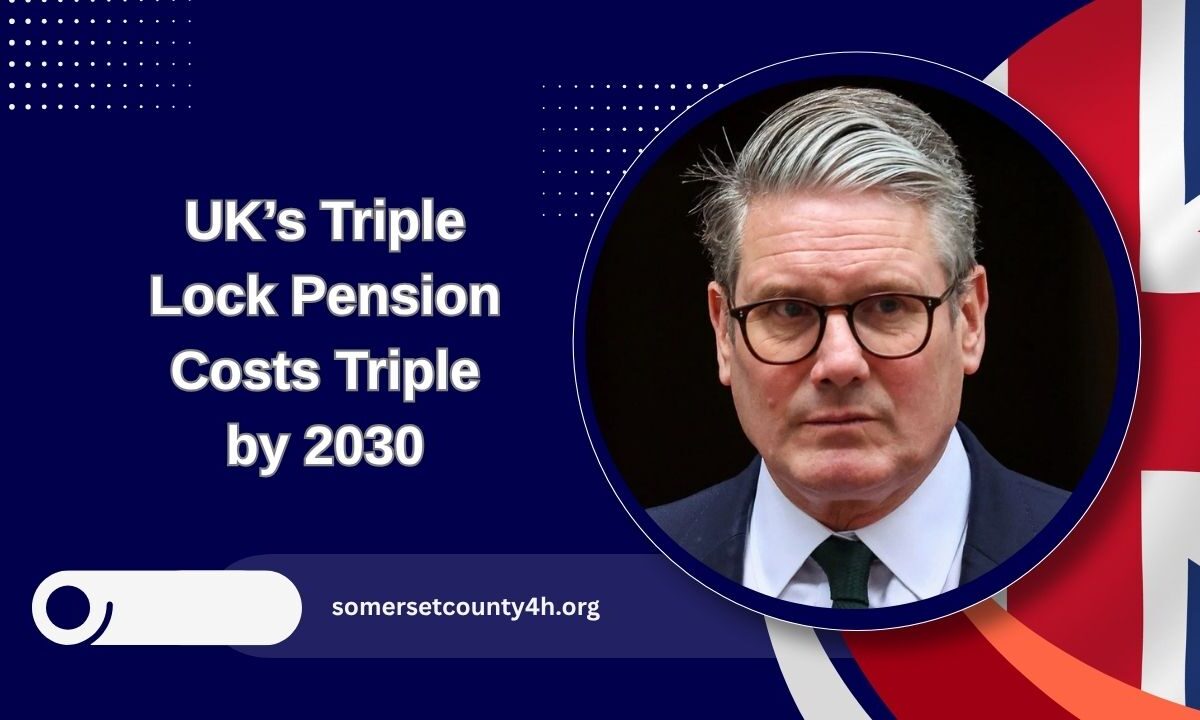The UK’s pension triple lock policy, once hailed as a vital safeguard for retirees, is now forecast to cost three times more than initially projected by the end of the decade.
According to the Office for Budget Responsibility (OBR), the annual cost is expected to reach £15.5 billion by 2030, putting increased pressure on the nation’s public finances.
As state pension spending grows rapidly due to demographic changes and the triple lock guarantee, concerns are mounting over its long-term sustainability and impact on government borrowing.
What Is the Triple Lock?
Introduced in 2011, the triple lock ensures that the state pension increases each year by the highest of three measures:
- Inflation (CPI)
- Average wage growth
- 2.5% minimum guarantee
This system was designed to protect pensioners’ incomes from lagging behind the cost of living or wage growth.
However, volatility in inflation and earnings has caused unexpected spikes in annual increases, drastically raising the cost of the policy.
Rising Pension Costs: A Look at the Numbers
| Metric | Value |
|---|---|
| Annual triple lock cost forecast (2030) | £15.5 billion |
| Current state pension spending (2025) | £138 billion (5% of UK GDP) |
| Projected share of GDP by early 2070s | 7.7% of UK economy |
| New flat-rate state pension (2025) | £230.25/week (£11,973/year) |
| Old basic state pension (2025) | £176.45/week (£9,180/year) |
The OBR highlights that the cost of the triple lock over its first two decades has been three times greater than originally expected.
Why the Triple Lock Costs Are Surging
There are two primary reasons for the cost surge:
- Demographic Shift: An ageing population means more people are claiming the state pension, increasing annual expenditure.
- Inflation and Earnings Volatility: Unpredictable inflation and wage spikes have activated the triple lock frequently, especially the non-earnings-linked 2.5% floor.
Out of the 13 years since it was introduced, the non-earnings-linked element has been triggered eight times, primarily due to unexpected inflation surges.
Government and Political Response
Despite the growing costs, the UK government remains committed to maintaining the triple lock. A Treasury spokesperson said, “We are committed to supporting pensioners and giving them the dignity and security they deserve in retirement.”
Chancellor Rachel Reeves confirmed that the triple lock will remain in place until the end of the current Parliament, reinforcing the government’s stance on pensioner support.
However, mounting criticism has emerged. The Institute for Fiscal Studies recently suggested that the policy should be replaced with a more sustainable index, such as linking increases to price inflation or economy-wide average earnings.
Public Finance and Sustainability Challenges
The OBR’s report underlines the vulnerability of UK public finances, citing government U-turns on spending cuts and welfare reform as additional stress factors.
Reinstating winter fuel payments and reversing planned tax rises have also contributed to the continued rise in public debt.
Government borrowing costs have risen as a result. On Tuesday, 10-year borrowing costs increased by 1.2%, a clear sign of growing investor concern.
Is the Triple Lock Sustainable?
OBR chair Richard Hughes warned that the triple lock is part of wider age-related spending pressures that are stretching the UK’s budget.
He stated, “The UK cannot afford the array of promises currently made unless long-term reforms are introduced.”
According to projections, state pension spending could rise to 7.7% of GDP by the 2070s, overtaking other major spending areas if the policy is left unchanged.
The UK’s triple lock pension policy, while instrumental in protecting retirees from poverty, is fast becoming a fiscal flashpoint.
With the cost projected to triple by 2030, reaching £15.5 billion annually, the long-term affordability of the policy is under increasing scrutiny.
As political leaders navigate between supporting pensioners and maintaining fiscal discipline, the triple lock stands at a crossroads.
Whether it is reformed, replaced, or retained unchanged will shape the future of retirement income and government spending for decades to come.
FAQs
What is the forecasted cost of the triple lock by 2030?
The annual cost is expected to reach £15.5 billion, nearly three times higher than initially estimated.
How much is the new state pension in 2025?
As of April 2025, the full new flat-rate pension is £230.25 per week, and the old basic state pension is £176.45 per week.
Is the triple lock being scrapped?
No. The government has confirmed it will maintain the triple lock until at least the end of the current Parliament.

